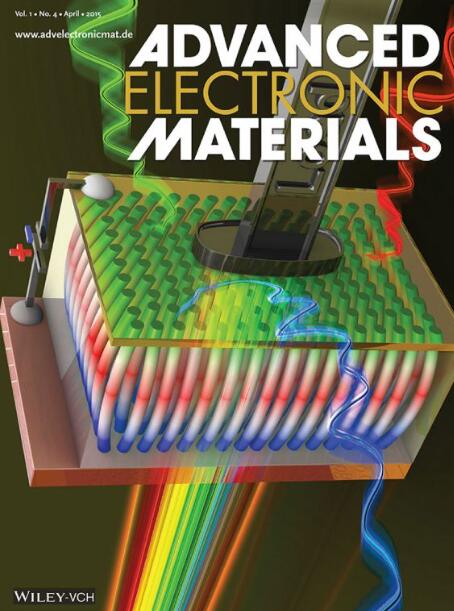High Linearity and Symmetry Ferroelectric Artificial Neuromorphic Devices Based on Ultrathin Indium-Tin-Oxide Channels
IF 5.3
2区 材料科学
Q2 MATERIALS SCIENCE, MULTIDISCIPLINARY
引用次数: 0
Abstract
Because of the limitations of the von Neumann structure and transistor size scaling, it is important to find new materials to build ultra-thin artificial synapse devices. Doped In2O3 has attracted a lot of research due to its excellent on/off ratio, high mobility, and large on-state current. In this paper, an ultrathin Sn-doped In2O3 (ITO) is used as a semiconductor channel, and ferroelectric material HZO is used as a gate stack to fabricate synaptic transistors. The device has a great on/off ratio ≈108 with a memory window of 1.73 V. The device successfully simulates the characteristics of the human brain. Besides, a conductance modulation by ferroelectric polarization illustrates linear potentiation and depression characteristics. The devices achieve good linearity of 0.45 for potential and 0.73 for depression and low asymmetry of 0.89. Based on the MNIST and sign language MNIST database, ITO FeFETs successfully recognize numbers and sign languages. This work demonstrates the potential of ITO in building high-performance artificial synaptic devices.

基于超薄氧化铟锡通道的高线性对称性铁电人工神经形态器件
由于冯诺依曼结构和晶体管尺寸缩放的限制,寻找新的材料来构建超薄人工突触器件是很重要的。掺杂In2O3因其优异的通断比、高迁移率和大的导通电流而引起了广泛的研究。本文采用超薄掺杂锡的In2O3 (ITO)作为半导体沟道,铁电材料HZO作为栅极堆叠来制作突触晶体管。该器件具有很高的通/关比≈108,内存窗口为1.73 V。这个装置成功地模拟了人脑的特征。此外,铁电极化电导调制具有线性增强和抑制特性。器件的电位线性度为0.45,压降线性度为0.73,不对称度为0.89。基于MNIST和手语MNIST数据库,ITO fefet成功地识别了数字和手语。这项工作证明了ITO在构建高性能人工突触器件方面的潜力。
本文章由计算机程序翻译,如有差异,请以英文原文为准。
求助全文
约1分钟内获得全文
求助全文
来源期刊

Advanced Electronic Materials
NANOSCIENCE & NANOTECHNOLOGYMATERIALS SCIE-MATERIALS SCIENCE, MULTIDISCIPLINARY
CiteScore
11.00
自引率
3.20%
发文量
433
期刊介绍:
Advanced Electronic Materials is an interdisciplinary forum for peer-reviewed, high-quality, high-impact research in the fields of materials science, physics, and engineering of electronic and magnetic materials. It includes research on physics and physical properties of electronic and magnetic materials, spintronics, electronics, device physics and engineering, micro- and nano-electromechanical systems, and organic electronics, in addition to fundamental research.
 求助内容:
求助内容: 应助结果提醒方式:
应助结果提醒方式:


